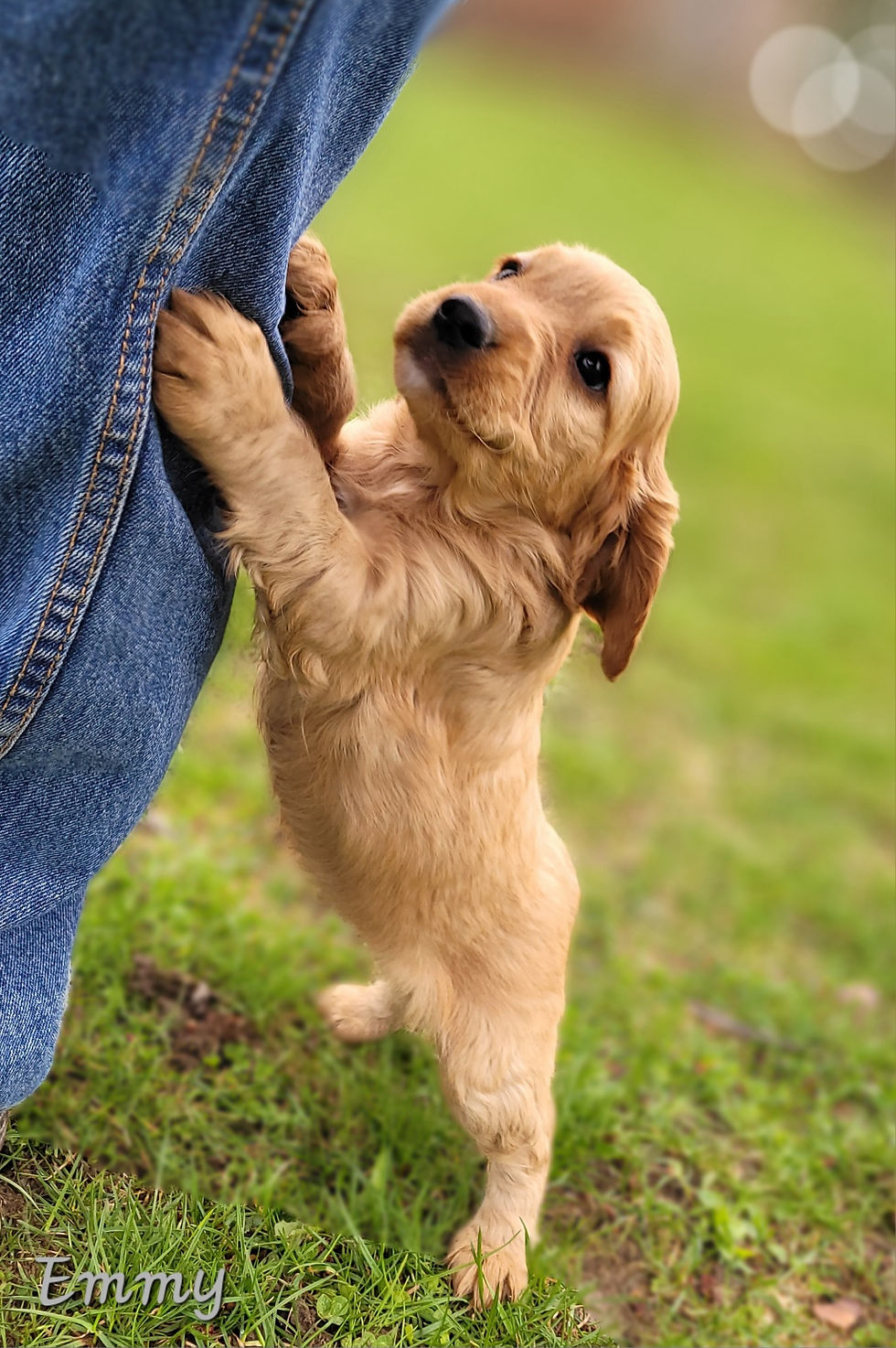🐶 How to Prevent Your Puppy’s Destructive Chewing
- Administrator

- Jun 21
- 3 min read
Updated: Aug 2
Bringing home a new puppy is one of life’s greatest joys. But along with the excitement comes a phase every dog owner dreads—destructive chewing.
If your shoes are getting shredded or your furniture’s taken a beating—you’re not alone. Yet this is preventable! Chewing is a completely natural behavior in puppies, and with the right guidance, you can help your pup chew the right things and prevent destructive chewing.
Keys on How To Prevent Your Puppy's Destructive Chewing Behaviour
Before you can prevent chewing, it helps to understand why it happens in the first place. Puppies chew for several reasons:
Teething pain (especially between 3 to 6 months)
Exploration of their environment
Boredom or excess energy
Stress or anxiety
Lack of appropriate outlets
Chewing isn’t bad—it’s how puppies learn and self-soothe. The key is to redirect the behavior.
1. Puppy-Proof Your Space
Start by removing temptation! Keep your floors and surfaces clear of:
Shoes, socks, or slippers
Electrical cords and chargers
Remote controls and sunglasses
Kids’ toys, purses, or bags
If possible, block off areas with baby gates or exercise pens until your puppy learns what’s off-limits.
2. Offer the Right Chew Toys
Puppies need things they can chew. Make sure they always have access to a few quality chew options, like:
Rubber toys (like KONG or Nylabone)
Soft teething toys designed for puppies
Natural chews like bully sticks, yak milk chews, or frozen carrots
Rotate toys every few days to keep your puppy interested.
3. Burn Off That Energy
A tired puppy is far less likely to go looking for trouble. Make sure your pup gets:
Daily walks or outdoor playtime
Interactive games like tug-of-war or fetch
Mental stimulation like food puzzles or short training sessions
High-energy breeds like Huskies and Cockapoos especially benefit from structured exercise and enrichment.
4. Reward Good Chewing
Puppies thrive on positive feedback. When you catch your puppy chewing the right thing, praise them right away:
“Good chew!” 🦴👏
You can even offer a small treat to reinforce that they made a good choice. The more they learn what does get rewarded, the less they’ll go after what doesn’t.
5. Redirect, Don’t Punish
If your pup starts chewing on something they shouldn’t:
Gently interrupt with a sound like “uh-uh” or clap your hands.
Immediately offer a chew toy.
Praise them once they start chewing the right item.
Avoid yelling or scolding. Punishment after the fact won’t work—your puppy won’t understand what they did wrong.
6. Try Puppy-Safe Bitter Sprays
For spots like furniture legs or baseboards, consider using a chew deterrent spray. Products like Bitter Apple are safe for pets but taste unpleasant enough to make them think twice.
Reapply as needed and test it on a hidden area first to avoid damage to surfaces.
7. Use a Crate or Playpen When You’re Away
If you’re not around to supervise, crate training is a great way to protect both your puppy and your stuff.
Make the crate a cozy space with a safe toy or chew inside. Puppies feel more secure in a den-like environment and are less likely to act out.
Final Thoughts: Be Patient and Stay Consistent
Remember—puppies aren’t being “bad” when they chew. They’re just learning. With the right combination of supervision, redirection, and praise, you’ll guide them through this phase with confidence.
And someday soon, your shoes, furniture, and sanity will thank you. 😊





